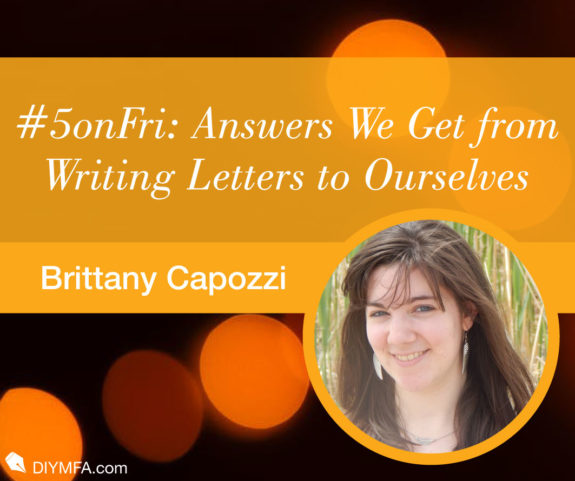When I started to build a daily writing routine, I felt like the only thing keeping me company was self-doubt. Though I had set up my space with notes, books, a creative survival kit, and even a bulletin board of inspirational quotes, I felt like I needed a cheerleading team to root for me. If I don’t have a mentor during this step, I wondered whether I could still accomplish my goals.
But then, while getting prepared for my hour of writing, I scooted five blank Notecards across the wooden floor from under my desk. (One of the easier kinds of toys to retrieve from my cats.) Spontaneously, I decided to turn one of these cards into a welcome letter and act as my own teacher.
The first item on the agenda was to read my welcome letter. “Not only will you find confidence, but you’ll also give yourself permission to have fun,” the note read. Without realizing it, I gave myself the gift of support—that spine of a cheerleader—that fills the empty void I felt while setting up my space.
Ever since then, and in the role of teacher, I’ve left check-in letters on the same “thank you” card template for myself. These check-in letters offer five answers to the ruminating question: “What’s the point of writing?”
1. A Dream Can Be Something to Grasp
I think of my daily check-in letter as a body of support. Each day, this body stands facing me at four inches tall as her birch-white arm lifts to reveal words of nourishment.
At the bottom of my initial welcome letter, I asked, “What is your main goal?” And at the end of my first hour, I answered with, “I will finish a full manuscript draft by summer.” Together, the body of support and the black ink make my writing dream a solid piece of matter. There’s some serious weight to that first part of creation.
One of my next steps after working from start to finish on a few small projects is to print out my memoir manuscript as is and sit with it like a real book. Though my voice will be in a different realm and time on the typed page, it’ll echo the tangibility of the handwritten letters. I am here and I am real, the 8 1/2 x 11-inch birch-white papers will say. Constantly holding the different stages of my dream makes it exactly the point.
2. What You Love Is What You Fight For
Writing letters to myself is a way to connect with safety when fear takes over the creative part of my brain. I can sit down with nerves but as I read a new letter the practice of respect, patience, and loyalty for my time kicks in. This makes working through fear and doubt easier. I enter what author Allan G. Hunter calls the “warrior-lover” archetype phase in his book, Stories We Need to Know: He explains that we fight for what we love and believe in what we are doing.
When I ask myself whether I feel fear, I sometimes create a journal entry in the blank space underneath the given letter and describe a scene I’m doubting: “I hide my hand in its sleeve, anticipating the jump of my arm, like the kickback of a gun… Why should this be anything to anyone?”
Being a Warrior-Lover doesn’t mean we can’t ask questions and doubt ourselves from time to time. Asking questions actually enables us to return to the big picture.
At the end of the day, I know that my hidden hand matters because that’s essential to my story. When there’s a scene that’s so detailed and authentic that I think of it often, I know it’s something I love and need to nurture.
3. A Long-Term Project Keeps the Brain Healthy
A start with any project can be a success in and of itself. I may not know where my poem on the body and a quartz singing bowl is taking me, but a partially finished draft created by any Warrior-Lover can hold the brain attentive and inspired. As a poem or essay can be read in one sitting, it does not mean they are not long-term projects in the making.
While not exactly long-term projects, creating small, daily lesson plans for the writing hour and doing writing exercises can have lasting mental effects. The planning, comprehending, and executing strengthen cognitive skills, such as memory and emotional resilience.
At the very least, writing can offer its own kind of vitamins for the mind.
4. We Visit the Street of Gratitude
Gratitude is a two-way street with these check-in letters. For instance, the second thing I wrote in my welcome letter to myself was, “Thank you for putting time aside.” The teacher part of me acts as an accountability buddy and appreciates the respect given.
I’m also thankful to have this outlet of letter writing because I’m gentler with myself. It’s in my nature to be a perfectionist so when I don’t finish a first draft of a yoga article on day one, as a teacher I write the next letter to myself acknowledging how I contributed to the project and that I did the best I could in the moment.
The humor of author Anne Lamott helps, too. In Bird by Bird, she gives writers permission to make messes in what she calls our “shitty first drafts.” She believes perfectionism is a way of cramping muscles and it chokes our writing. I think of this whenever I need to physically get up and walk around after staring at the same section of my project. I let myself and the work “breathe and move” per Lamott’s suggestion.
5. We Challenge Ourselves
I’m my own cheerleader, but I make sure not to patronize myself in the process. I counter my cheers by pushing myself. For instance, I participate in writing contests. The challenge is not a given contest itself but rather the ability to turn a submission into a humbling writing exercise. At the end of the process, I see and understand it as an honest attempt and an honest piece whether or not it finds a home.
I recently assigned myself the task of putting down a current read and starting a new one. This sounds as though the teacher is giving the student permission to give up, but my goal is to keep myself engaged with reading. I’m actually giving myself permission to put one book aside that does not serve me (yet) and pick up a book that allows me to be an active reader in my genre, taking notes and drawing hearts next to passages.
A more subtle challenge comes from asking conversational questions in letters. These questions make me reflect on my motivation level outside the writing hour: “What activities are you doing to refocus yourself?” “You think you’ll do a Reading Challenge soon?”
Overall, the letters are full of writing with focus without the pressure.
Tell us in the comments: What is your check-in letter going to say?

Brittany Capozzi grew up outside of Boston and holds a BA in English from Curry College with a double concentration in Creative Writing and Professional Writing. She draws inspiration from teaching and studying yoga and belly dancing. Feel free to say hi and check out her work at https://bellabiancalynn.com/ or follow her on Twitter @BellaBiancaL.







